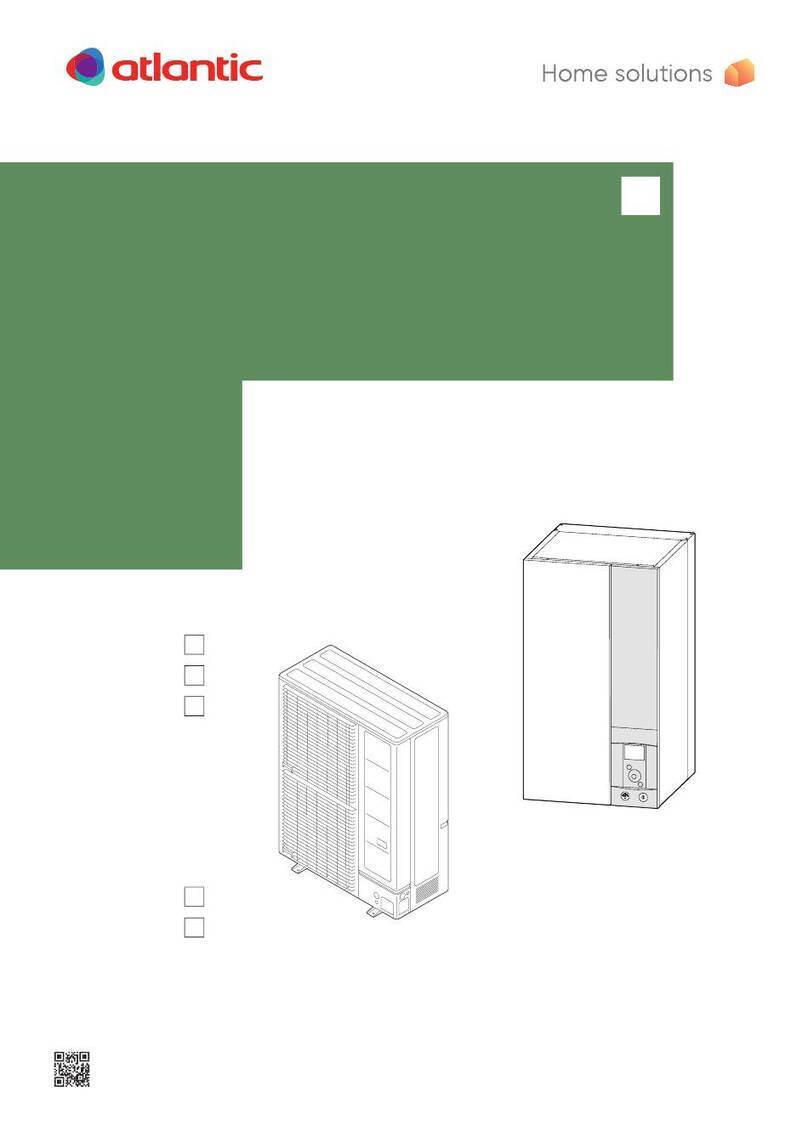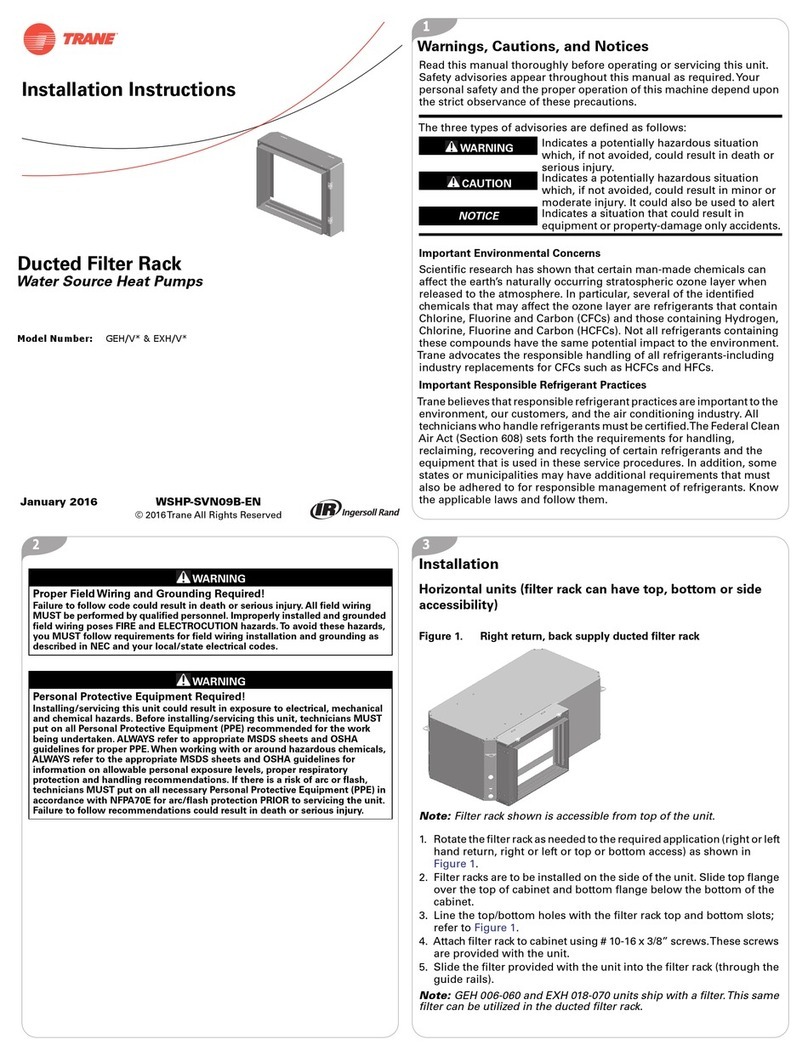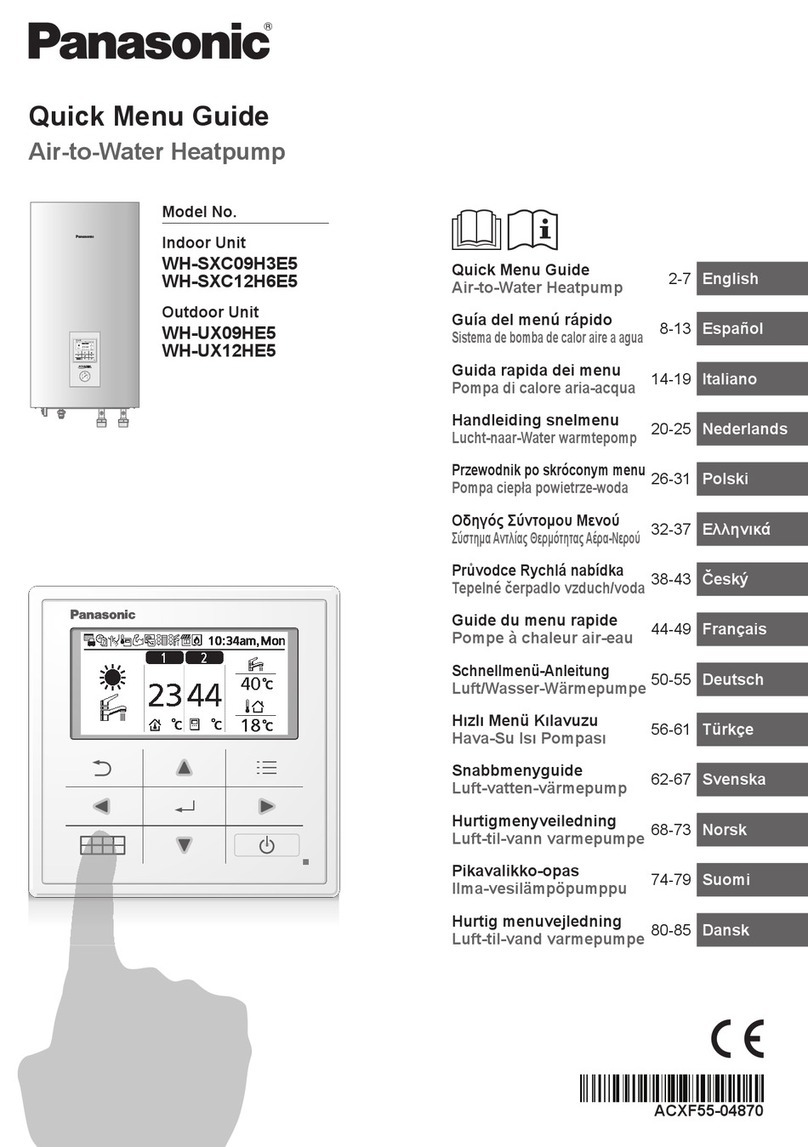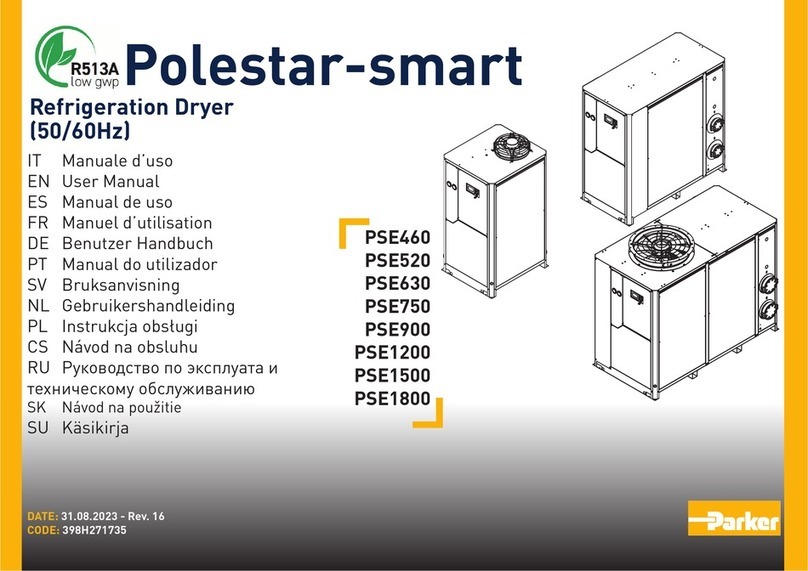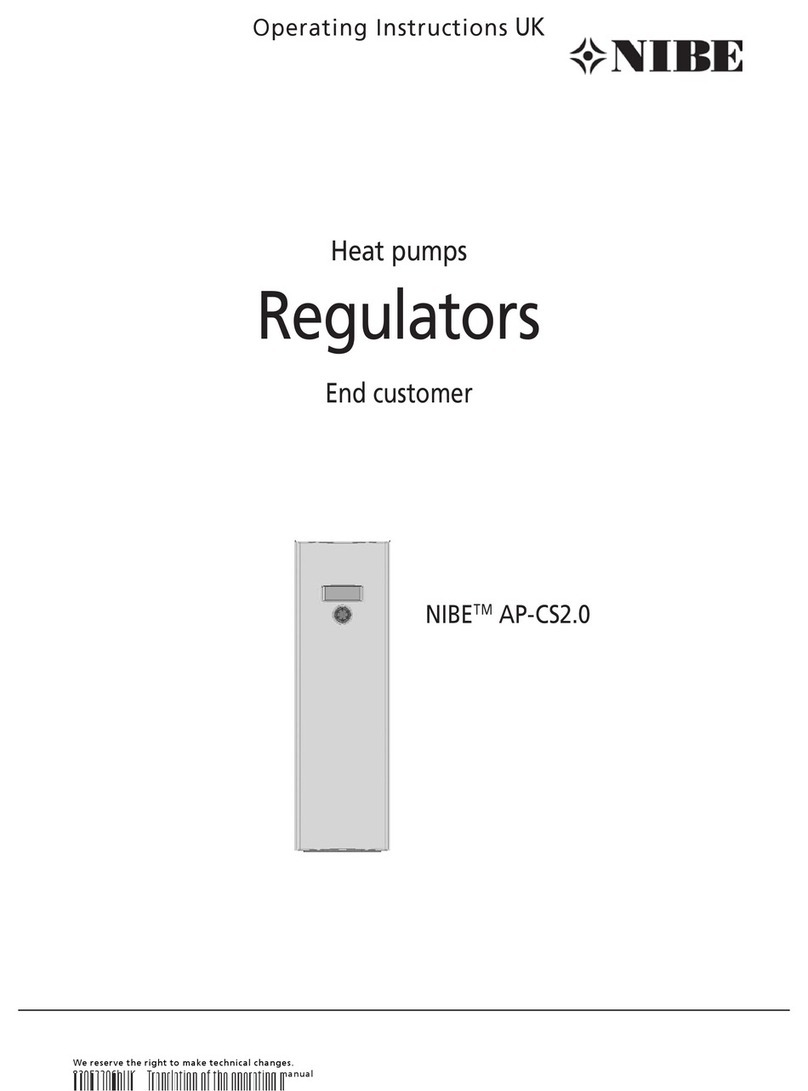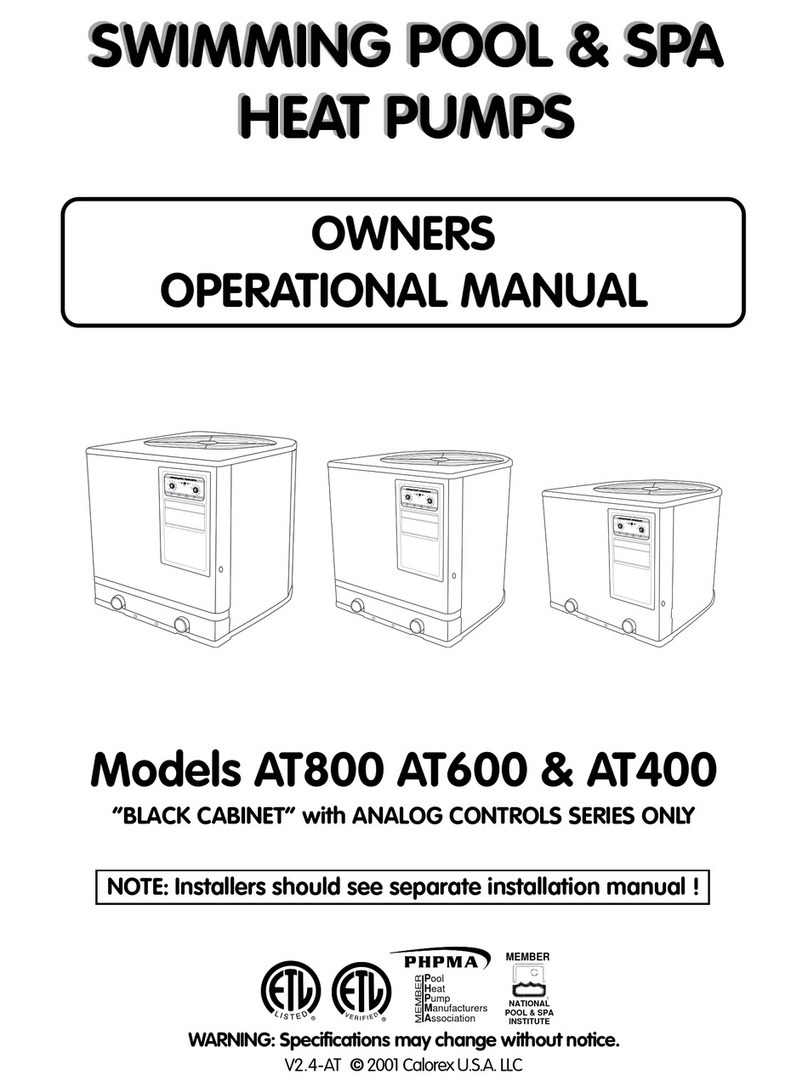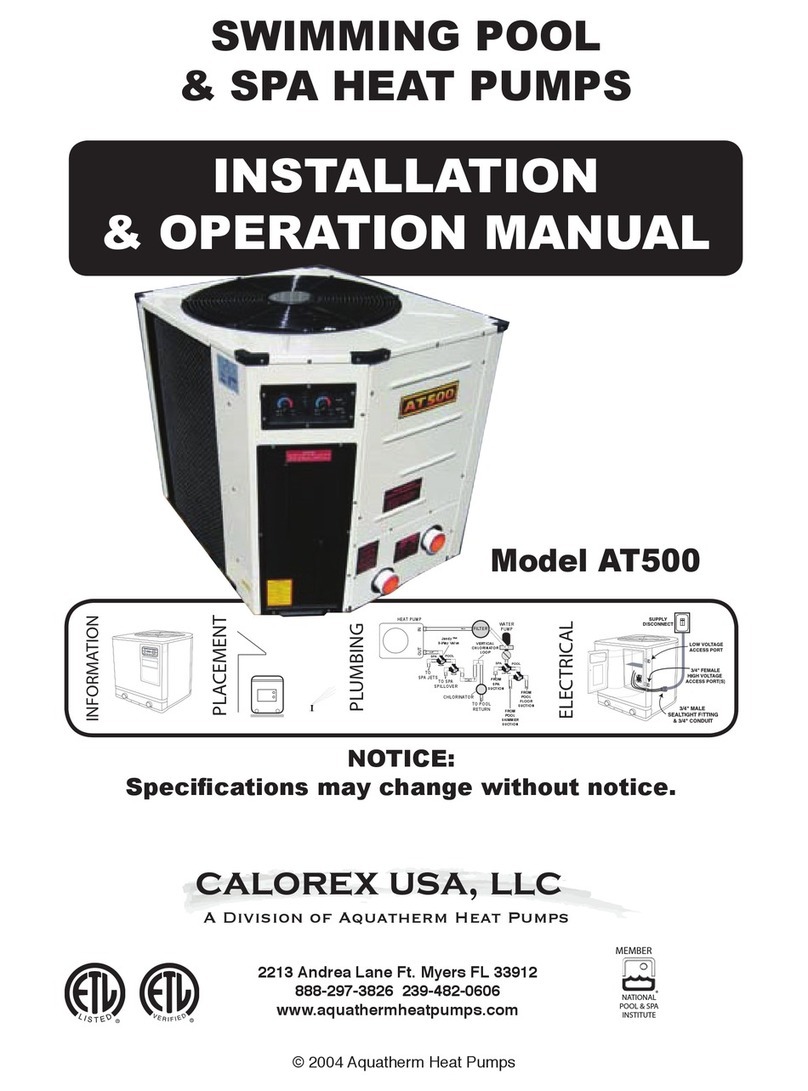
8| Electrical RZ CS Series Heat Pump
RZ CS Series Heat Pump8 733 922 031 (2014/03) Subject to change without prior notice
• MALFUNCTION OUTPUT: Alarm output is
Normally Open (NO) dry contact. If pulse is
selected the alarm output will be pulsed. The
fault output will depend on the dip switch
setting for "ALARM". If it is set to "CONST", a
constant signal will be produced to indicate a
fault has occurred and the unit requires
inspection to determine the type of fault. If it is
set to "PULSE", a pulse signal is produced and
a fault code is detected by a remote device
indicating the fault. See L.E.D Fault Indication
below for blink code explanation. The remote
device must have a malfunction detection
capability when the UPM board is set to
"PULSE".
• DISPLAY OUTPUT: The Display output is a pulse
output connected to the Unit Diagnostic Display
(UDD) and it pulses 24VAC when the unit is in an
lockout alarm condition.
• TEST DIP SWITCH: A test dip switch is provided to
reduce all time delays settings to 10 seconds during
troubleshooting or verification of unit operation.
• FREEZE SENSOR: The default setting for the
freeze limit trip is 30°F (sensor number 1); however
this can be changed to 15°F by cutting the R30
resistor located on top of the DIP switch SW1. The
default setting for the freeze limit trip is 30°F
(sensor number 1); however this can be
changed to 15°F by cutting the R24 resistor
located on top of the DIP switch SW1. Since
freeze sensor 2 is dedicated to monitor the
evaporator coil it is recommended to leave the
factory default setting on the board. The UPM
controller will constantly monitor the
refrigerant temperature with the sensor
mounted close to the condensing water coil
between the thermal expansion valve and
water coil. If temperature drops below or
remains at the freeze limit trip for 30 seconds,
the controller will shut the compressor down
and enter into a soft lockout condition. Both
the status LED and the Alarm contact will be
active. The LED will flash (three (3) times) the
code associated with this alarm condition. If
this alarm occurs 2 times (or 4 if Dip switch is
set to 4) within an hour the UPM controller will
enter into a hard lockout condition. It will
constantly monitor the refrigerant temperature
with the sensor mounted close to the
evaporator between the thermal expansion
valve and evaporator coil as shown in Figure
#5. If temperature drops below or remains at
the freeze limit trip for 30 seconds, the
controller will shut the compressor down and
enter into a soft lockout condition. Both the
status LED and the Alarm contact will be
active. The LED will flash (six (6) times) the
code associated with this alarm condition. If
this alarm occurs 2 times (or 4 if Dip switch is
set to 4) within an hour the controller will enter
into a hard lockout condition.
• INTELLIGENT RESET: If a fault condition is
initiated, the 5 minute delay on break time period is
initiated and the unit will restart after these delays
expire. During this period the fault LED will indicate
the cause of the fault. If the fault condition still
exists or occurs 2 or 4 times (depending on 2 or 4
setting for Lockout dip switch) before 60 minutes,
the unit will go into a hard lockout and requires a
manual lockout reset. A single condensate overflow
fault will cause the unit to go into a hard lockout
immediately, and will require a manual lockout
reset.
• LOCKOUT RESET: A hard lockout can be reset
by turning the unit thermostat off and then
back on when the “RESET” dip switch is set to
“Y” or by shutting off unit power at the circuit
breaker when the “RESET” dip switch is set to
“R”.
If 24 VAC output is needed, R must be wired to
ALR-COM terminal; 24 VAC will be available o
the ALR-OUT terminal when the unit is in the
alarm condition.
Operation of unit in test mode can lead to
accelerated wear and premature failure of
components. The "TEST" switch must be set
back to "NO" after troubleshooting/
servicing.
Freeze sensor will not guard against the loss
of water. Flow switch is recommended to
prevent unit from running if water flow is
lost or reduced.
The blower motor will remain active during a
lockout condition.





















